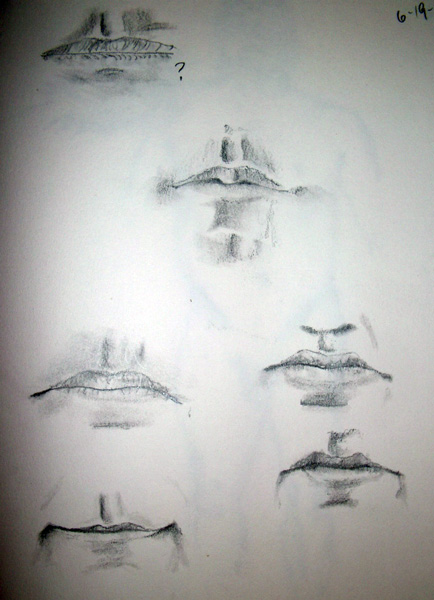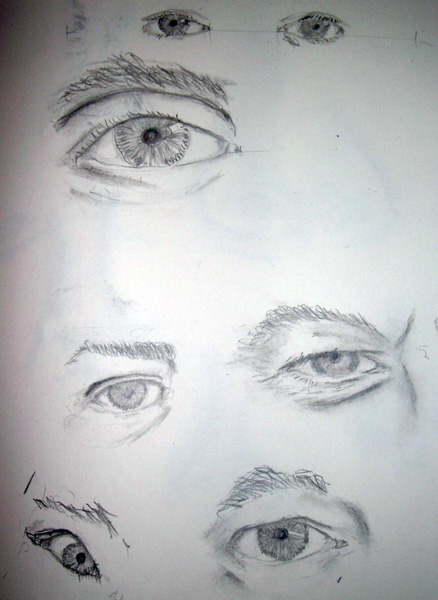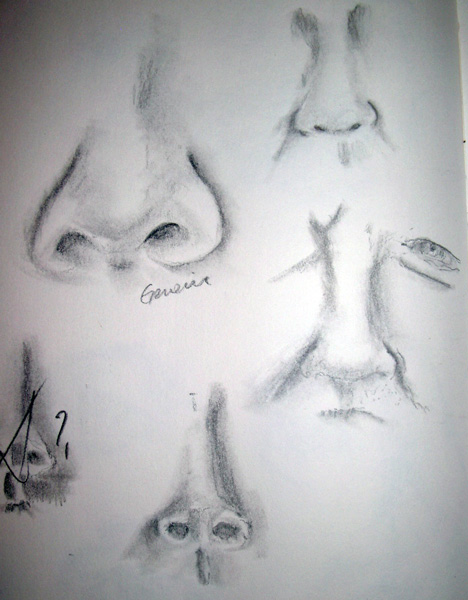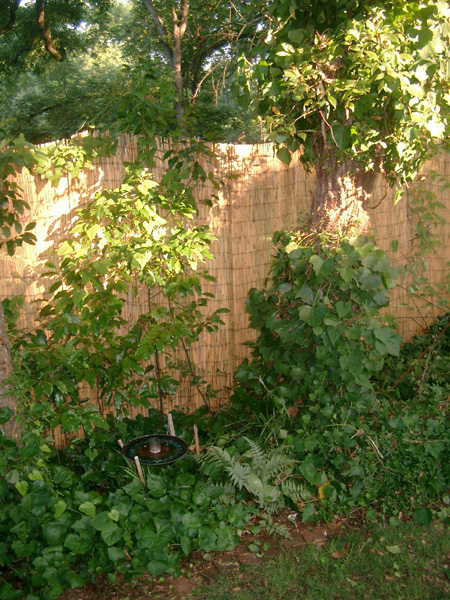…The first few brushstrokes to the blank canvas satisfy the requirements of many possible paintings, while the last few fit only that painting , they could go nowhere else. The development of an imagined piece into an actual piece is a progression of decreasing possibilities, as each step in the execution reduces future options by converting one , and only one , possibility into a reality.
That moment of completion is also, inevitably, a moment of loss , the loss of all the other forms the imagined piece might have taken. [p. 16]
This is a fearful thing, indeed, if you allow yourself to think that every brushstroke you lay down is in fact a closing off of infinite possibilities. It really means that every brushstroke is the “road not taken,” and the laws of statistics would seem to dictate that the majority of paths you take are the wrong one. You have doomed your work by that very brushstroke.
However, there is another way to look at it which might preserve your sanity. I figured this out after a couple of egregiously misapplied slaps of paint. To quote Big Sam, “It ain’t quittin’ time till I say it’s quittin’ time.”
The authors were talking about holding on to that vision you had when you started your work, and how difficult that is as the work begins to shape itself. Indeed, if you have actually made it to the endgame and have been able to force your materials to do your will, then every action you take has the potential to be ruinous. How sculptors do it I’ll never know.
But for me, and especially at this point in my painting, such fears are stupid. I’m not a master, nor am I particularly adept. I can do any damn thing I please with the painting in front of me. This was driven home one day when I was executing as series of figure paintings and one was just ugly, plain ugly.
“What the hell,” I thought, “it’s ruined. I can’t do anything to it that would make it less artistically valid.” And I just started messing with it: garish colors, shadows where there weren’t before, bold slashes of form and color. Somehow it began to pull together , and when I was done, no, it wasn’t successful. But it was provocative, and I immediately used the extreme measures I had just played to create another sketch that was rather pleasing to my sight.
If this were not a family-friendly blog, I’d post both for you to see.
The main thought I had here though was that a) you don’t have to see each action you take as necessarily limiting what you end up; and b) you’re really better off not seeing the completion , or abandonment , of a work as the death of its infinity of alternates. That’s what a series is for, after all. You think you could do it differently? Do it. Call it #2.




